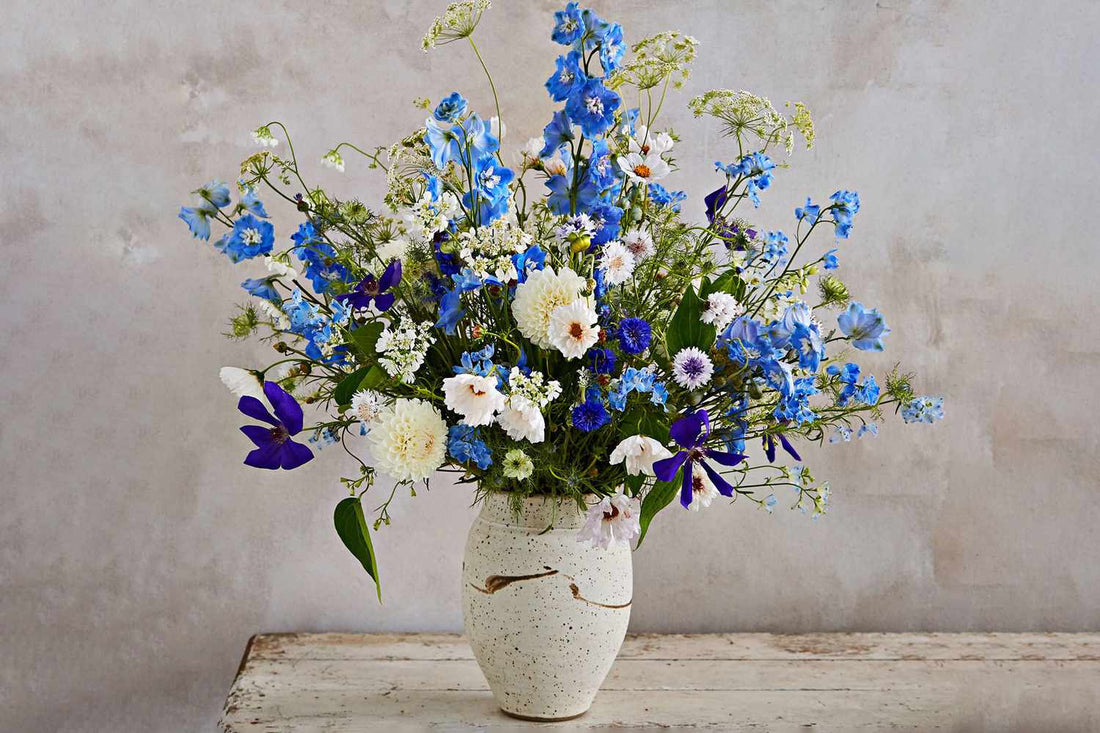
Creating a Captivating Floral Arrangement: A Blooming Expression of Creativity
Floral arrangements are more than just a collection of flowers – they are an artful composition that reflects your personal style, evokes emotions, and adds a touch of natural beauty to any space. Whether you're crafting a centerpiece for a special occasion, sprucing up your home decor, or gifting a heartfelt gesture, creating a captivating floral arrangement is a delightful process that allows your creativity to flourish. Let's explore the steps, tips, and techniques that will guide you in crafting a stunning floral masterpiece that captures the essence of your vision.
1. Selecting the Right Flowers
The foundation of a captivating floral arrangement lies in your choice of flowers. Consider the occasion, color scheme, and theme you have in mind. Opt for a mix of flower types, sizes, and shapes to add depth and visual interest to your arrangement. Choose flowers that are in season for optimal freshness and availability.
2. Choosing a Vessel
The vessel you choose for your floral arrangement sets the tone for the overall aesthetic. It can be a classic vase, a rustic mason jar, an elegant ceramic pot, or even a unique vintage find. The vessel's shape, color, and size should complement the flowers and enhance the arrangement's visual impact.
3. Creating a Focal Point
Every floral arrangement benefits from a focal point – a standout flower or group of flowers that draws the eye and commands attention. This could be a large, striking bloom or a cluster of flowers with a contrasting color or texture. Placing the focal point slightly off-center adds a dynamic touch to the arrangement.
4. Adding Depth and Layers
To create depth and dimension, layer your flowers by varying their heights. Trim some stems shorter and leave others longer to achieve a natural, cascading effect. This technique adds a sense of movement to the arrangement and prevents it from looking flat.
5. Mixing Textures and Shapes
A captivating floral arrangement incorporates a variety of textures and shapes. Combine soft, delicate petals with more robust blooms, and pair rounded flowers with spiky ones. Incorporating foliage, such as eucalyptus leaves or ferns, adds a lush and organic feel to the arrangement.
6. Playing with Colors
Colors play a crucial role in the visual impact of your floral arrangement. Choose a color palette that complements your space or the occasion. You can opt for monochromatic elegance, harmonious pastels, or bold contrasts. Consider the emotions and mood associated with different colors – for instance, soft blues evoke tranquility, while vibrant reds convey energy and passion.
7. Paying Attention to Proportions
Maintaining balanced proportions is essential in creating a visually appealing arrangement. Avoid overcrowding the vessel, as this can make the arrangement feel chaotic. Allow enough space between the flowers for each bloom to shine individually while contributing to the overall harmony.
8. Arranging with Care
Start by trimming the stems at an angle to promote water absorption. Remove any leaves that would be submerged in water to prevent bacterial growth. Begin with the largest and focal flowers, placing them at different heights. Fill in the gaps with smaller flowers and foliage, ensuring an even distribution of colors and textures.
9. Embracing Negative Space
Negative space, the empty area between flowers and elements, is just as important as the blooms themselves. It allows the eye to rest and highlights the beauty of each individual flower. Embrace negative space to achieve a balanced and elegant composition.
10. Adding Personal Touches
Incorporate personal touches to make your floral arrangement truly unique. Consider adding meaningful elements such as a ribbon, a vintage brooch, or a special ornament that holds sentimental value. These personal touches infuse your arrangement with your personality and create a more heartfelt presentation.
11. Keeping It Fresh
To prolong the life of your floral arrangement, change the water every couple of days and retrim the stems. Keep the arrangement away from direct sunlight and drafts, which can cause the flowers to wilt more quickly. If some flowers begin to fade, simply remove them and rearrange the remaining blooms for a refreshed look.
12. Experimenting with Styles
Floral arrangements come in various styles, each with its own unique aesthetic. Try your hand at different styles, such as the classic round bouquet, the cascading arrangement, or the minimalist single-bloom display. Experimenting with styles allows you to explore different techniques and discover your preferences.
13. Trusting Your Instincts
While there are guidelines and techniques to follow, creating a captivating floral arrangement is ultimately a creative endeavor. Trust your instincts and allow yourself to explore your creativity. Play with different combinations, adjust placements, and don't be afraid to take risks.
In Conclusion
Crafting a captivating floral arrangement is a rewarding and artistic process that enables you to connect with nature and express your creativity. By selecting the right flowers, choosing a suitable vessel, and paying attention to elements like color, texture, and proportion, you can create a stunning masterpiece that brings joy, beauty, and a touch of nature's wonder into your space. Whether you're crafting a bouquet for a special occasion or brightening up your everyday surroundings, let your imagination bloom as you create an arrangement that reflects your unique style and resonates with the emotions you wish to convey.
